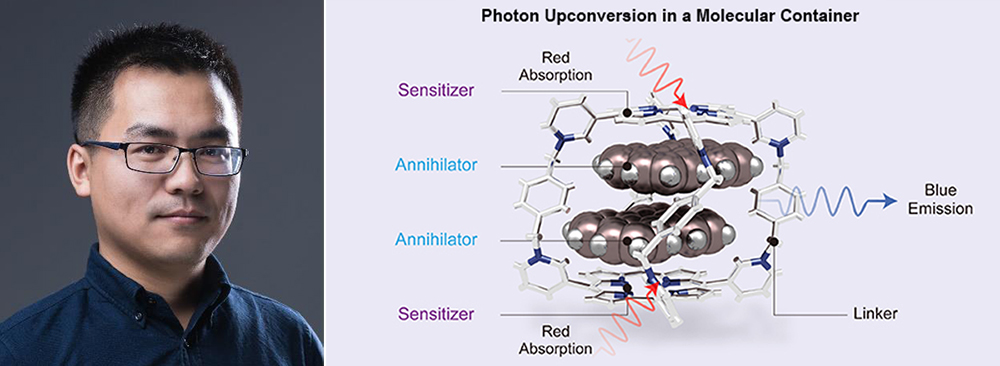A Research Article entitled “Triplet–Triplet Annihilation Upconversion in a Porphyrinic Molecular Container” has been published in the Journal of the American Chemical Society, marking another successful collaboration between the Stoddart Group and the Wasielewski Group. The research was spearheaded by Hongliang Chen, now leading his own research team as a Professor at Zhejiang University.
In this work, we describe a supramolecular host–guest complex that demonstrates photon upconversion through the bringing together of sensitizers and annihilators. The cage-like molecular container, incorporating two porphyrinic sensitizers, was found capable of encapsulating two slightly twisted perylene photon emitters inside its cavity. When the Q bands of the porphyrins are excited with low-energy light, the upconverted fluorescence of the perylenes at 470 nm can be detected. Central to this achievement was the tailoring the cavity size (9.6–10.4 Å) of the molecular container so that it could host two annihilators with a suitable [π···π] distance (3.2–3.5 Å). This proof-of-concept research demonstrates that triplet-triplet annihilation upconversion can take place within a single suitably designed supermolecule.
Pictured below – Hongliang Chen alongside the TOC for his publication “Triplet–Triplet Annihilation Upconversion in a Porphyrinic Molecular Container”:


